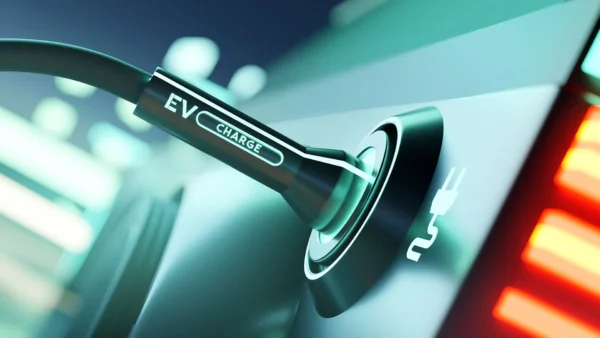As electric vehicles (EVs) gain traction on Canadian roads, they’re not just a trend – they’re a smart choice. Whether you’re attracted to long-term fuel savings or environmental friendliness, EVs offer compelling reasons to make the switch.
But as you explore the world of EVs, it’s important to consider their impact on road safety. Here’s what you need to know:
EV batteries make electric-powered cars heavier than their gas counterparts
Here are some examples from the Kelley Blue Book comparing weights for different 2023 gas-powered cars and EVs:
- A gas-powered Hyundai (Elantra) weighs in at around 3,005 lbs; an electric Hyundai (Kona) weighs in at around 3,715 lbs
- A gas-powered Volvo (XC40) weighs in around 4,000 lbs; an electric Volvo (C40) weighs almost 5,000lbs.
- A gas-powered Ford-150 weighs in at 4,060 lbs; an electric Ford-150 weighs in at 6,015 lbs
The main reason EVs are heavier is because of their batteries, which can add hundreds and hundreds of pounds. Although this extra weight doesn’t affect how the EV works, it can make crashes more dangerous.
Even the strongest steel guardrails, designed to stop cars from veering off the road, might not always be enough to halt electric vehicles. A recent test using a nearly four-ton 2022 Rivian electric pickup truck showed just how powerful these vehicles can be. Engineers at Nebraska’s Midwest Roadside Safety Facility conducted the test, and you can watch the video below:
Weight impact on tire wear
Due to EVs’ heavier weight, they need more durable tires. According to Hyundai, EV tires wear 20% faster than the tires of gas-powered vehicles. This is due to the acceleration of EVs, which creates a strong and instantaneous power. Traditional tires on EVs would require more frequent replacement, which over time can cost a lot of money.
Impacting on braking efficiency
The added weight of the battery pack in EVs also means braking is a lot harder on EV tires; EVs may need additional braking distance to stop appropriately. On the more positive side, EV brake systems tend to require less maintenance thanks to regenerative braking.
Difference in weight between EVs and gas-powered vehicles
The real safety concern with the weight of EVs is not necessarily for the driver of the EV itself, but for others on the road. In a collision, a lighter vehicle is a lot likelier to have a different outcome when struck by a heavy EV versus another gas-powered vehicle of similar weight and size. Although the average EV on the roads in 2023 weighed roughly 4,000-4,500 lbs, recent EVs can weigh thousands of pounds more. That difference, in a crash, could be tragic.
It’s the unfortunate law of physics. If your car is hundreds or even thousands of pounds heavier than the other vehicle, that other vehicle is going to experience far more damage.
The video example above features a 2016 Kia Sorento SUV and a 2018 Kia Forte sedan (both ICEs, but used to demonstrate the weight difference impact in crashes) in a head-on collision. The SUV weighs almost 1,000 lbs more than the sedan. In the post-crash analysis, the dummies in the sedan were found to have a higher likelihood of injuries to the head, leg, neck, and chest. The sedan was also visibly far more damaged than the SUV.
Are electric vehicles safe?

While EV sales are increasing, they still represent a small number of the total vehicles on the road. As a result, there’s very little crash and injury data to show, and heavier electric SUVs and trucks have only been on the roads in considerable numbers for a short period.
For drivers, EVs are about as safe as you make them. EVs do have the advantage of advanced tech to help mitigate collisions, like proximity detection, rearview cameras, and even things like lane assist and autopilot.This is also true of newer ICEs. Not all EVs have autopilot, but some of these added features can help to increase overall vehicle safety and reduce the likelihood of a collision. Even Tesla has said that, per mile driven, drivers using autopilot crash 10 times less than the national average.
In summary, for EV drivers, yes – overall, electric vehicles are relatively safe and collision frequencies may continue to decrease as technology continues to evolve. For others on the road? Maybe not as much. Since there’s not enough sufficient data due to the limited number of EVs on the road, all we can do for now is continue to analyze the available info and figures.
Can car safety ratings impact insurance cost?
Insurance companies give plenty of consideration to what make/model of car you drive, which can include the safety ratings of that vehicle.
In Canada, there are 3 main entities that are used to determine car safety ratings. These are the National Safety Mark, National Highway Traffic Safety Administration, and the Insurance Institute for Highway Safety (IIHS) Safety Ratings. The latter two are based out of the US, but all are used to determine which cars are the safest to drive. Vehicles are ranked from “good” to “poor”, with cars on the “good” side often receiving lower rates and vice versa for cars on the “poor” end. Of course, car safety rating is just one piece of the puzzle when it comes to insurance premiums, and your rates could vary for all kinds of different reasons.
Let’s explore this a little deeper. Imagine the same driver – we can call him “Steve” for the sake of this comparison – was a 40-year-old man, married, with a clean record who had a 14km commute and lived in Markham, Ontario. We’ll take Steve’s exact profile, down to the exact same coverage and limits, and we’ll find quotes for him for cars of different safety ratings but of similar value. For this comparison, we used the following vehicles and identified their IIHS ratings:
- 2023 Chevrolet Malibu – Side: Poor vs 2023 Venue Ultimate – Side: Good
- 2023 Hyundai Palisade – Moderate Overlap: Poor vs 2023 Kia Telluride – Moderate Overlap: Good
- 2023 Kia Forte – Side: Poor vs 2023 Toyota Corolla – Side: Good
Quote comparisons for cars of similar value with different IIHS safety ratings
| Rates | 2023 Chevrolet Malibu (Poor) | 2023 Venue Ultimate (Good) | 2023 Hyundai Palisade (Poor) | 2023 Kia Telluride (Good) | 2023 Kia Forte (Poor) | 2023 Toyota Corolla (Good) |
| Lowest Rate | $2,408 | $1,951 | $2,654 | $2,509 | $2,574 | $1,976 |
| Highest Rate | $3,412 | $2,639 | $2,994 | $2,908 | $3,412 | $2,745 |
| Average Rate | $2,793 | $2,234 | $2,795 | $2,638 | $2,870 | $2,279 |
The cars used in the examples above weren’t EVs, but keep in mind that for the comparison the only thing considered was the difference in safety ratings.
While you’ll see a considerable price difference between the vehicles rated Poor vs those rated Good, safety rating is only one aspect of car insurance ratings. Still, it makes a different, so it’s something worth considering when choosing your new vehicle – EV or not.
Looking to save on your EV insurance?
Want to save on your EV insurance? Mitch works with dozens of auto insurers in Canada and can help you shop around to find the best rates, including companies that offer green car discounts when insuring EVs. Give us a call today to get a free, no-obligation EV insurance quote.
Looking for car insurance?
Speak with a Mitch Insurance broker today to get a quote on Ontario auto insurance.
Call now
1-800-731-2228







